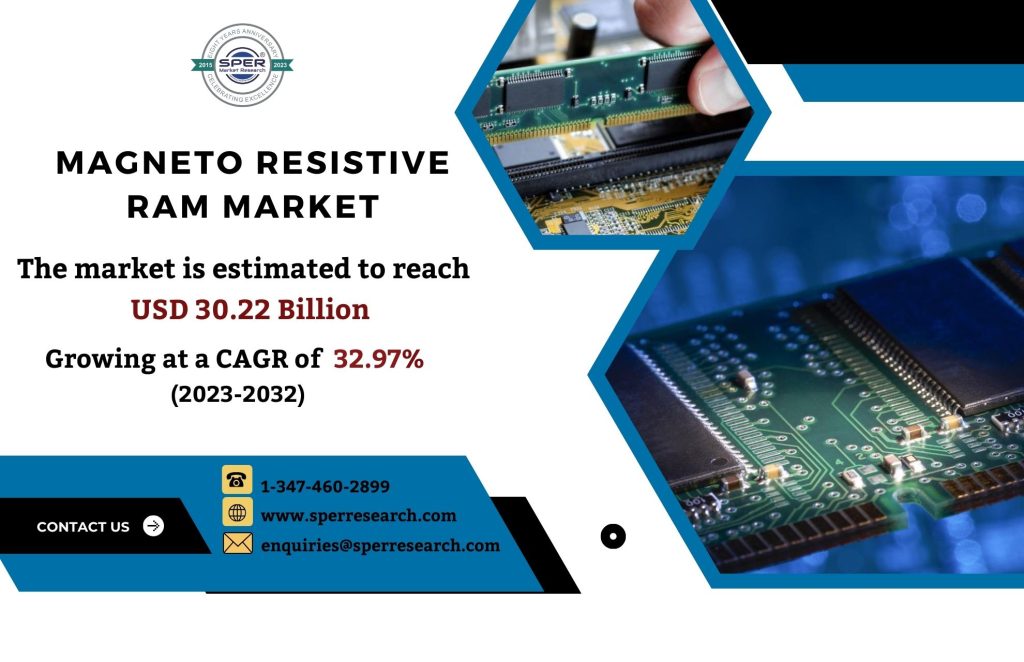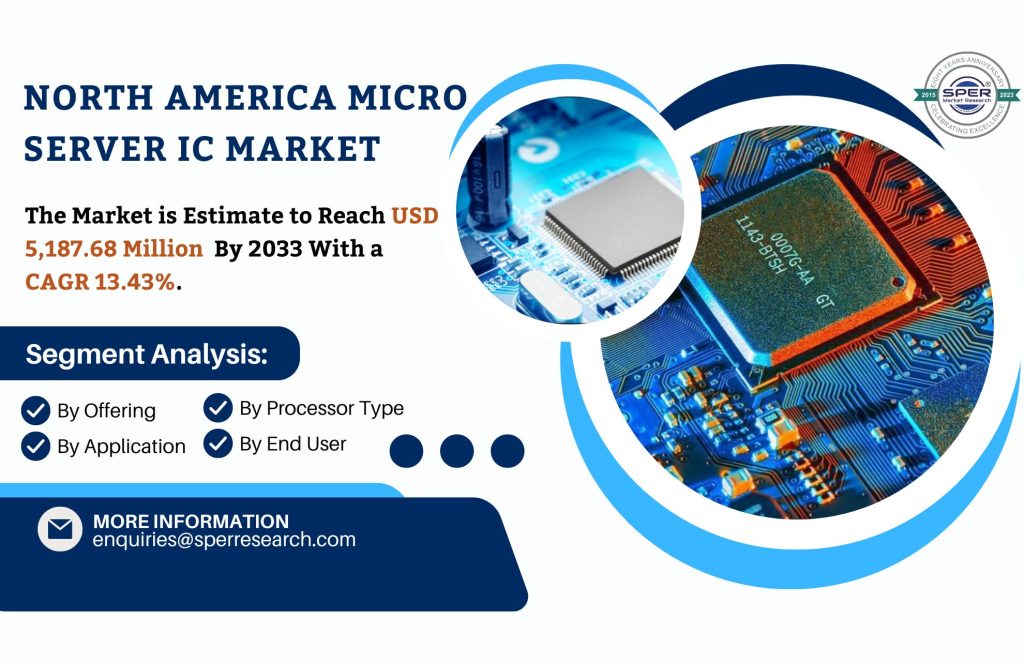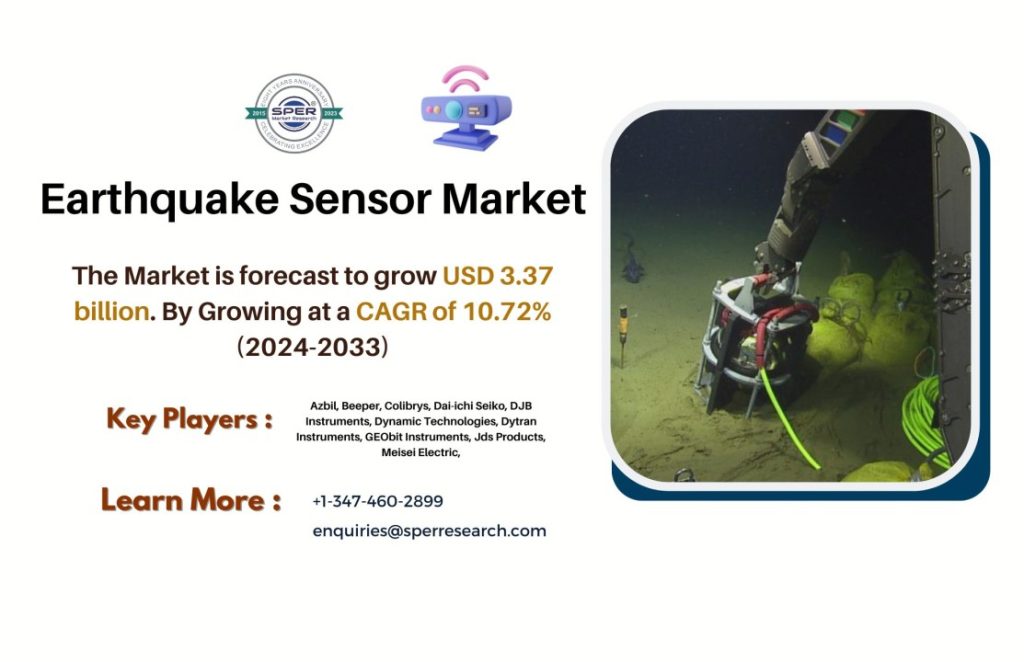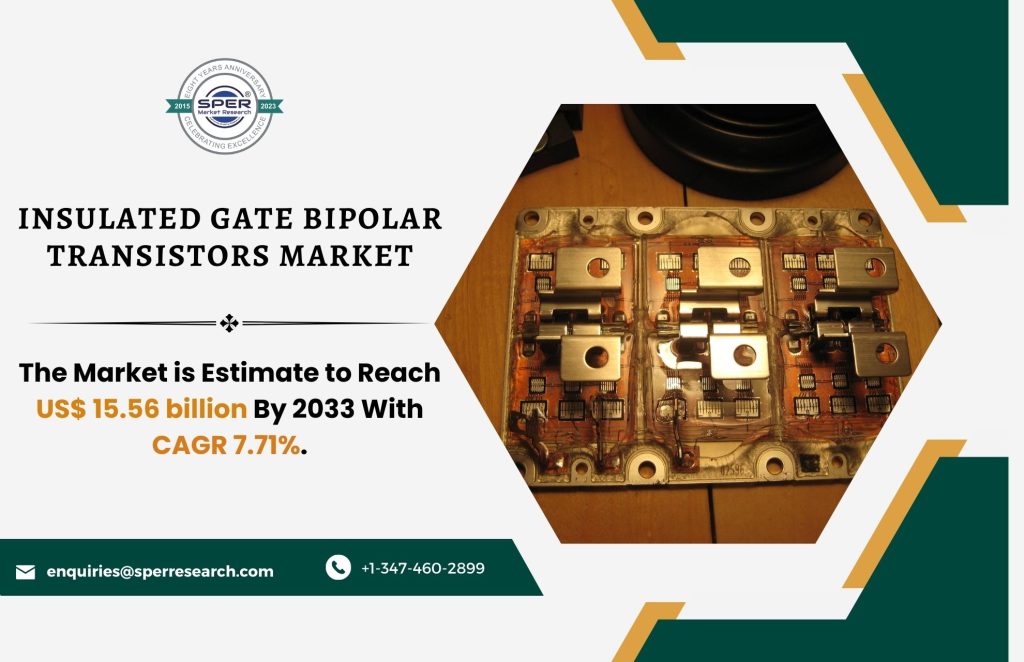Magneto resistive random access memory, or MRAM for short, is a kind of non-volatile RAM. When a metal is in a magnetic field, its electrical resistance is referred to as its magnetic state. Rather than storing your data using electrical bits, the MRAM stores your data using magnetic states and magnetization direction in a ferromagnetic material (a material that is highly susceptible to magnetization to store data bits) and uses magneto-resistance to read the stored data. Electron spin is used to store information. It is referred to as “ideal memory” at times. Because this kind of memory is non-volatile, very little power is used, and data retention can be achieved without requiring a refresh.
According to SPER Market Research, ‘Magneto Resistive RAM market size- By Type, By Offering, By, By Application- Regional Outlook, Competitive Strategies and Segment Forecast to 2032’ states that the Global Magneto Resistive RAM market is estimated to reach USD 30.22 billion by 2032 with a CAGR of 32.97%.
MRAM technology becomes a feasible alternative as the need for non-volatile memory solutions rises in a number of industries, including consumer electronics, automotive, aerospace, and enterprise storage. MRAM is appealing to applications needing dependable and high-performance memory solutions because of its capacity to store data without the need for power and its quick read and write speeds. Compared to more conventional memory technologies like SRAM, DRAM, and flash memory, MRAM has a number of advantages. It offers increased endurance, reduced power consumption, faster read and write speeds, and higher density. Due to these benefits, MRAM is being adopted by a variety of industries and is appropriate for a broad range of applications.
The market for magneto resistive RAM confronts difficulties in increasing production to keep up with demand while keeping costs down. Obstacles arise from integration complexity with current systems, necessitating extensive study and development. In addition, thorough testing and standardization are necessary to guarantee compatibility with a variety of applications. Moreover, when more firms enter the market, competition grows, demanding differentiation techniques.
Request For Free Sample Report @ https://www.sperresearch.com/report-store/magneto-resistive-ram-market.aspx?sample=1
Impact of COVID-19 on the Global Magneto Resistive RAM Market
The market for magneto resistive RAM, or MRAM, and the world economy have both been significantly impacted by the COVID-19 epidemic. A significant effect of the pandemic on the MRAM market has been a deceleration in manufacturing and disturbances in the supply chain. Due to lockout, some MRAM chip manufacturers were forced to temporarily halt operations or scale back output. MRAM chip shortages and increased consumer costs are the results of this. But in other industries, the epidemic has also given MRAM new chances. For instance, the need for data center infrastructure has expanded due to the growing need for remote work and online education, which has in turn increased demand for high-performance memory solutions like MRAM.
Global Magneto Resistive RAM Market Key Players:
It is projected that the magneto resistive RAM (MRAM) market is likely to expand significantly in a number of regions, including China, North America, Europe, Asia-Pacific (APAC), and the United States of America (USA). North America is anticipated to lead the market among these regions because it has a strong electronics and semiconductor industry. Due to the quickening pace of technological development and the rising need for data storage solutions in nations like China and India, APAC is also anticipated to see substantial growth. Europe is expected to experience consistent growth because it is home to significant market participants.Some of the key players are- Avalanche Technology Inc, Everspin Technology Inc, Honeywell International Inc, Numen Inc, NVE Corporation, Samsung Electronics Co. Ltd, Spin Memory, Taiwan Semiconductor Manufacturing, Toshiba Corporation
Global Magneto Resistive RAM Market Segmentation:
The SPER Market Research report seeks to give market dynamics, demand, and supply forecast for the years up to 2032. This report contains statistics on product type segment growth estimates and forecasts
By Type: Based on the Type, Global Magneto Resistive RAM Market is segmented as; Toggle MRAM, Spin-Transfer Torque MRAM.
By Offering: Based on the Offering, Global Magneto Resistive RAM Market is segmented as; Embedded, Stand-alone.
By Application: Based on the Application, Global Magneto Resistive RAM Market is segmented as; Aerospace and Defence, Automotive, Consumer Electronics, Enterprises Storage, Others.
By Region: This report also provide the data for key regional segments of Asia-Pacific, Europe, Middle East and Africa, North America, Latin America
This study also encompasses various drivers and restraining factors of this market for the forecast period. Various growth opportunities are also discussed in the report.
For More Information, refer to below link:-
Magneto Resistive RAM Market Business Opportunities
Related Reports:
Follow Us –
LinkedIn | Instagram | Facebook | Twitter
Contact Us:
Sara Lopes, Business Consultant – U.S.A.
SPER Market Research
+1-347-460-2899








